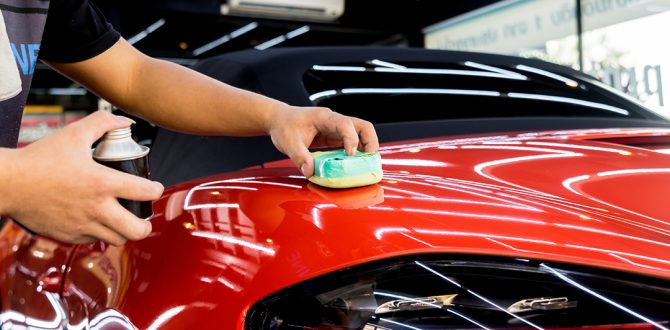Introduction
A. Explanation of buffing pad
A buffing pad, also known as a polishing pad, is a tool used for cleaning and polishing surfaces. It is typically made of foam or wool and attaches to a machine or hand-held polisher.
B. Importance of replacing worn out buffing pads
Using worn out buffing pads can result in decreased effectiveness, damage to surfaces, and may require more time and effort to achieve desired results. Replacing worn out pads ensures that your cleaning and polishing tools are performing at their best. Car buffer polisher tool pads can be replace if it is failed to polish the surface that has a dent.
How Long Do Buffing Pads Last?
A. Factors that affect the lifespan of buffing pads
The lifespan of buffing pads can vary depending on several factors, including frequency of use, type of material, and the intensity of the job.
B. Average lifespan of buffing pads
On average, buffing pads can last anywhere from 3-10 uses, but this can vary depending on the factors mentioned above. It is important to regularly inspect your pads to determine when they need replacement.
Signs that Your Buffing Pad Needs Replacement
A. Decreased effectiveness
If you notice that your buffing pad is not producing the desired results, it may be time to replace it. A worn out pad can result in streaks, swirl marks, and uneven finishes.
B. Visible wear and tear
Look for signs of wear and tear on your buffing pad, including fraying edges, holes, or tears. These can be indications that the pad is no longer effective and needs replacement.
C. Product buildup
If you notice that your buffing pad has an excessive buildup of product, it may be time to replace it. Buildup can impact the effectiveness of the pad and may result in uneven application or polishing.
Best Practices for Buffing Pad Replacement
A. Regular inspections and cleaning
Inspect your buffing pads regularly to check for signs of wear and tear or product buildup. Clean them thoroughly after each use to extend their lifespan and ensure they perform at their best.
B. Proper storage
Store your buffing pads in a cool, dry place, away from direct sunlight and extreme temperatures. Avoid stacking them on top of each other or storing them under heavy objects that could deform the pad.
C. Replacing pads in sets
It is recommended to replace all of your buffing pads in a set at the same time. This ensures that they wear evenly and produce consistent results.
Conclusion
Maintaining your buffing pads is crucial for achieving high-quality results when cleaning and polishing surfaces. By regularly inspecting, cleaning, and replacing them when necessary, you can extend their lifespan and keep your tools performing at their best. Keep these best practices in mind to get the most out of your buffing pads and achieve the desired results.







